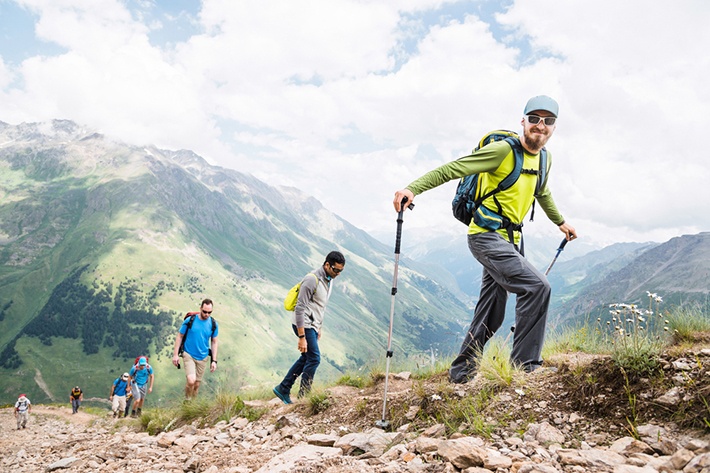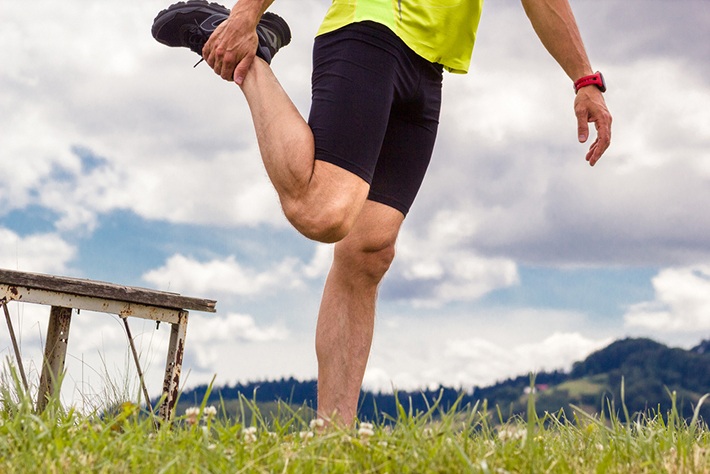If you’re planning a multi-day hike and you’re wondering which exercise helps prepare for uphill hiking, you’ve come to the right place.
Today I’m going to share with you some of my favorite exercises (and proper ways to do them), as well as the importance of preparing for an uphill hike.
More...
Do You Really Need To Train For Uphill Hiking?

Of course you do.
Now’s not the time to get overly confident in your fitness level.
We’re not talking about short-distance walks or flat trails here; you’ll deal with a lot of continuous uphill stretches and just when you think you’ve reached level ground, a steep incline will show up out of nowhere.
Uphill hiking is an endeavor that shouldn't be taken lightly. Even if you’re in good shape as it is, a little preparation won’t hurt – it can only make things easier for you.
Isn’t Walking Enough?

Here’s the thing about hiking:
It’s one of the simplest ways to get (and stay) in shape. All you need are some high-quality hiking shoes – that’s pretty much it, besides a will to do it, of course.
And I think that's precisely the reason why some people seem to forget how exhausting hiking can be.
After all, it’s only walking, right?
Wrong.
One of the most common questions I get from people is:
Isn’t walking enough to prepare me for hikes?
While good, old-fashioned walking won’t hurt, it’s not nearly enough to help you get in a good enough shape to handle the toll uphill hiking will most certainly take on your body.
You need to start somewhere, though.
I would suggest at least three times a week as a good starting point – 45 minutes to an hour per day will be enough to get you started.
Once you become comfortable with that, take it up a notch – add one more day to your routine and make it count.
Do you have a particular trail in mind for your uphill hiking?
Excellent: make walking at least two-thirds of its length a week your goal, but remember you should get there gradually.
Another thing you should keep in mind is that walking on flat terrain won’t do much regarding preparing your body for an uphill hike – you need to find hilly terrain.
You can call me Captain Obvious all you want for saying this, but:
Nothing can prepare you for hiking uphill other than actually walking uphill.
If you live in an area where hills are nowhere to be found, stairs and aerobic step machines will have to do.
Oh, and one more thing – don’t forget your backpack. You’ll be carrying it around when you go hiking, so it’s only logical to have it on you while you train, as well.
Training For Uphill Hiking: My Favorite Exercises

Don’t Forget Stretching
- Quads – While you’re standing on one foot, pull up the other one behind your back and stay in this position between 15 and 30 seconds, then switch sides. If your balance isn’t all that great, use a chair or a wall as support. Don’t make this a habit, though – you’re going to need your balance up in the hills.
- Hamstrings – Hamstring stretches can be done in a seated position. Start with both legs in front of you, then bend your knee in a way that will allow you to place your foot on the inner thigh of your other leg. Once you’re in this position, slowly lean forward, as if you were reaching for the foot of your resting leg. The goal is to bring your chest down to your thigh – you should be able to stay in this position for about 30 seconds, then switch legs.
- Calfs – Now get up and stand against a wall. Place one foot in front of the other and slightly bend it at the knee, then extend the other leg behind you, so that your toes are touching the floor. Slowly transfer your weight onto your back leg and try to get your heel to touch the floor – you should start feeling the stretch. Once you do, hold that position for about 15 to 30 seconds, then switch your legs and repeat.
- Glutes – Start by laying flat on your back; bend one knee and bring it up to your chest. Gradually pull it closer until you can feel the stretch and hold this position for 30 seconds. From this position, move your knee to the opposite side of your body, so that it goes over the other leg – you’ll feel the stretch in your hip. Now hold the position for another 30 seconds, release, switch legs and repeat.
- Back and Abs – The so-called cobra stretches are the most common way to stretch both back and abs. Lie on the floor face down and place your hands on the ground (they should be flat and in shoulder level). Using your hands, start to slowly push up until you arch your back and get yourself into the „cobra“ pose; for an added stretch, you can look up at the ceiling. Stay in this position for 30 seconds, then slowly go back down.

Build Up Your Strength
- Squats – Squats are a great exercise, as long as you do them correctly – keeping your back straight and both feet on the ground at all times are a must. Aim for at least 10 to 20 reps and if you want to up the stakes, try doing squats with your hiking backpack on.
- Leg Extensions – You’re going to need a chair for this one – with your back straight, sit on the chair with both feet on the floor. Now lift one leg and straighten the knee, tighten your quads and stay in this position for a few seconds. Do up to 15 reps before you switch legs. If you want to push yourself, add ankle weights to the mix.
- Leg Lifts – This one is relatively simple; lie on your side and place your free hand on the floor to help with your balance. All you need to do now is lift your leg up in the air (move it slightly back); two sets of 8 to 12 reps will be enough for each side.
- Sit-Ups and Crunches – Start with crunches, which are pretty much half-way sit-ups, and move on to doing actual sit-ups once you build your core strength enough. Aim for two to three sets of 15 reps. Keep track of your breathing – inhale as you go down and exhale when you’re going up.
- Planks – Lie face down on the floor with your hands shoulder-width apart – you should be resting on your forearms. With your toes pushing into the ground, bring your entire body up (remember to tighten your abdominal muscles), so that it forms a straight line. Stay in this position for as long as you can – beginners should go for about 30 to 60 seconds.
Related Posts:
Cardio, Cardio, Cardio

Don’t forget that heart is also a muscle and it needs a proper workout, too.
There are plenty of ways to improve your cardio levels – the choice is ultimately yours.
But since I’m already here, I’ll share with you my personal favorites: swimming and cycling. But if going for a job is more up your lane, by all means, go for it – anything that gets your hear rate up is a good enough cardio workout, if you ask me.
Bonus: To save money on footwear, check out deals and discount codes at Fitness Savvy from top brands including Nike and Adidas.
It’s Time To Get Serious
In my experience, an average person needs around twelve weeks to prepare for uphill hiking adequately, so plan it out and give yourself some time.
You can't expect to see the results overnight. It will take a lot of dedication and a little bit of patience, but believe me - you'll get there.
